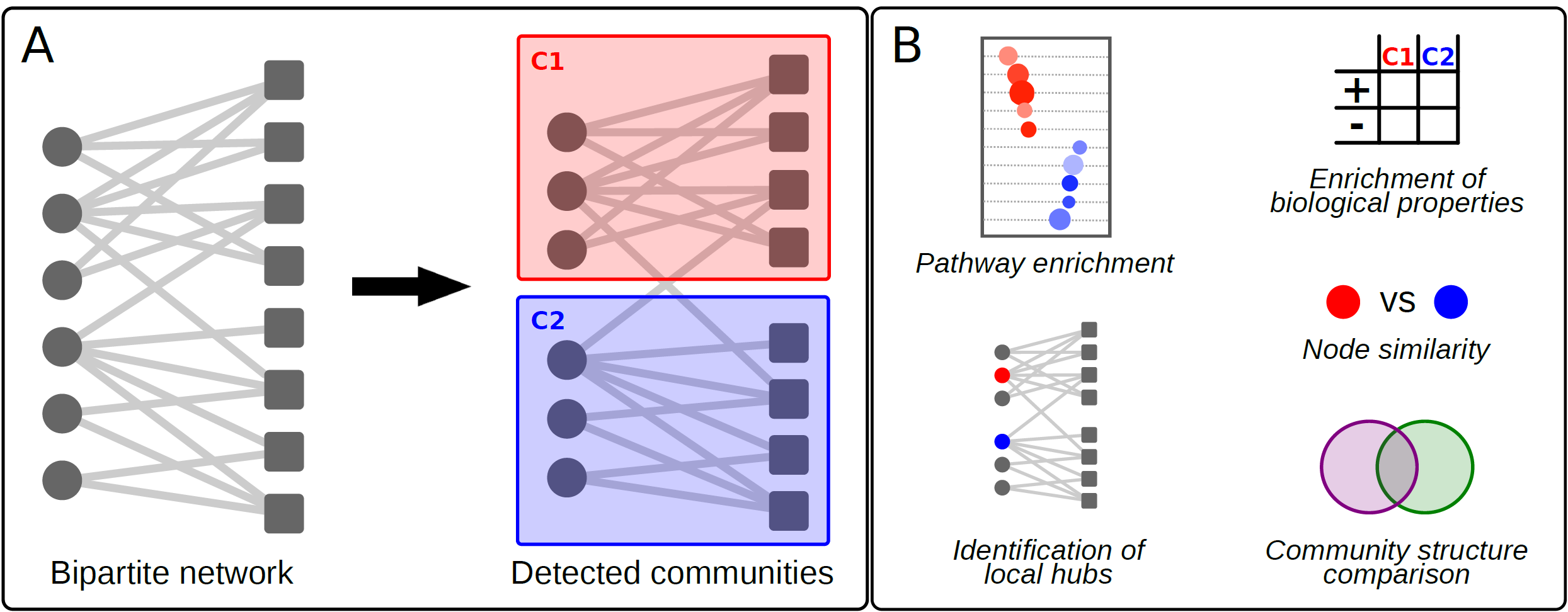New publication
Genís recently published a review paper in Frontiers in Genetics. In the review, we describe community detection in large-scale bipartite biological networks.
Network analysis is a powerful methodology to understand the complex interplay of biological interactions. With the emergence of next generation sequencing technologies and other high-throughput experimental approaches, large amounts genome-wide data are now available for analysis. While standard biological approaches have helped our understanding of a wide variety biological processes, the integration of large-scale data in genome-wide networks is a relatively new field. Networks can be analyzed by calculating summary statistics, such as centrality metrics, or for example by comparing individual interactions. However, analyzing the network's topology is even more powerful, as it takes into account the entire network of interactions. A widely used method for topological network analysis is community detection, which identifies modules of highly connected nodes. Community detection algorithms were initially designed for unipartite networks—those including only one type of node. However, biological networks are often of bipartite nature, including interactions between two distinct types of nodes. As multiple community detection approaches are now available for bipartite networks, we present an overview of these methods in the review, and describe their strengths and weaknesses in their application to large-scale biological data.
More information on the publication can be found here.
